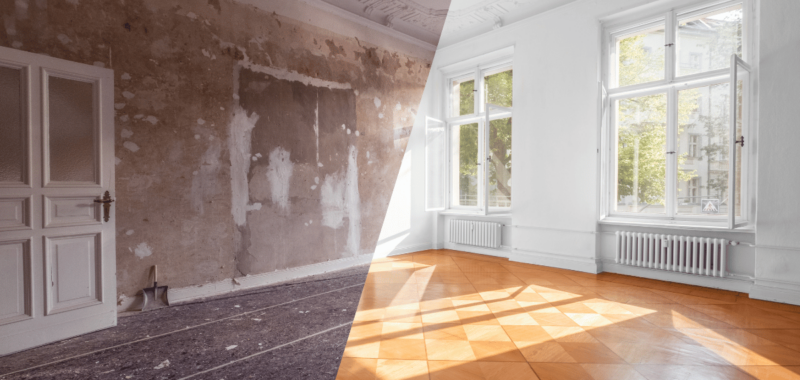More than four in 10 distressed properties purchased at auction are in underserved neighborhoods with low incomes or high minority populations, neighborhoods that often have been overlooked and left behind.
“Those areas that I’m now developing I grew up in. And I remember being in those areas without hot water. I remember what it’s like to have slumlords,” said Jermaine Morgan, a Columbus, Georgia-based local community developer who purchases distressed property at auction. “I try to provide consumers with what I wish I had growing up.”
Morgan purchased four properties at foreclosure auction via the Auction.com marketplace in 2023. All four of those properties were in low-income and minority Census tracts, as defined by the Federal Housing Finance Agency (FHFA). According to public record tax assessor data, all four are now also owner-occupied
“I’m trying to establish our community again,” Morgan said, noting the extensive renovations he does before reselling the homes to retail buyers. “I’m trying to make homes in certain areas livable again. I can’t just be a part of that problem. I want to be a part of the solution.”
Nationwide, 43% of distressed properties sold at auction were in low-income or minority Census tracts, according to an analysis of more than 195,000 properties sold on Auction.com since 2018 and underserved areas data from the FHFA. That number has held steady over time, with 43% of 2023 auction sales in underserved communities.
In Morgan’s home state of Georgia, 48.8% of all distressed properties sold on Auction.com over the last seven years are in underserved neighborhoods, the sixth highest share of any state behind Delaware (55.7%), Maryland (53.2%), New Mexico (52.0%), Michigan (49.2%) and California (49.0%)
Like Morgan, most buyers of distressed properties at auction are small business owners providing local jobs and motivated by a desire to improve the local community, according to buyer survey data from Auction.com.
More than three-fourths (78%) of Auction.com buyers surveyed in 2024 described themselves as local community developers, up slightly from 77% of buyers surveyed in 2023. Another 13% of buyers described themselves as owner-occupant buyers while, only 3% described themselves as institutional investors.
A staggering 96% of buyers surveyed in 2024 said they purchased 10 or fewer properties the previous year, with 72% saying they purchased two or fewer during the year.
For most Auction.com buyers, their motivations for investing in real estate are twofold. Building wealth is a top priority, with 97% ranking it as a top-three motivation. However, they are also highly motivated by a desire to improve the communities where they invest. 82% ranked neighborhood improvement as a top-three motivation, and 57% saw job creation as a top-three motivation.
“It’s been a couple of years now that I’ve invested, and I’ve made some money, and I’ve been able to provide a better life for my family,” said Morgan, adding that his motivation for investing expanded as he better understood the impact that local investors like him can have on the community. “It is more driven now by providing service to the marketplace.”
Local community developers like Jermaine are dramatically raising the value of the properties they purchase at auction through extensive renovations. An analysis of more than 70,000 formerly distressed properties that were resold within one year of being purchased via Auction.com shows that an average of 37 points in value were added between the auction purchase and the resale.
Collectively, local community developers like Jermaine significantly impact neighborhood stabilization nationwide. Of nearly 850,000 U.S. properties brought to foreclosure auction since 2018, more than 468,000 (55%) are now owner-occupied, according to an analysis of county recorder and tax assessor data from ATTOM Data Solutions.
More than 200,000 of those formerly foreclosed, now owner-occupied properties (43%) are in underserved Census tracts as defined by the FHFA.
The share of formerly foreclosed properties that are now owner-occupied varies by state, from 79% in Rhode Island to 33% in Hawaii. In Morgan’s home state of Georgia, 53% of formerly foreclosed homes are now owner-occupied.
“The question that we have to ask ourselves as investors is do we continue to allow our community to diminish or do we step in and do something about it,” Morgan said. “I choose to step in and do something about it.”
Daren Blomquist is VP of market economics at Auction.com.

